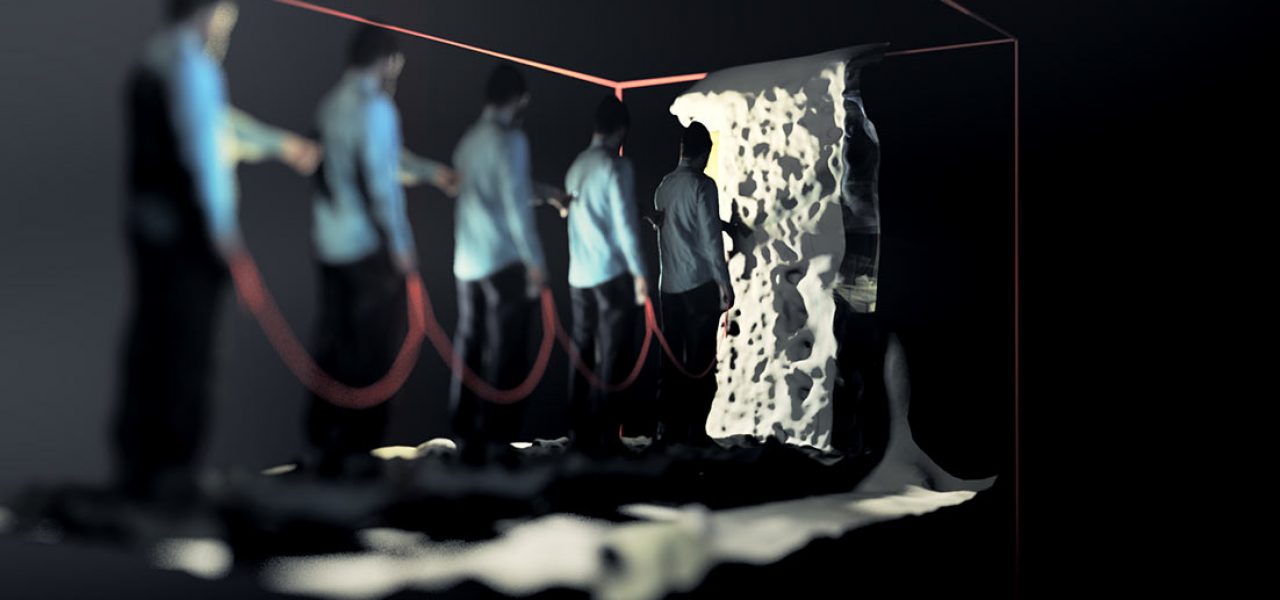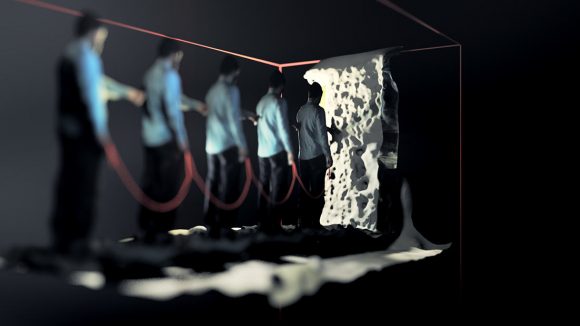

Making CGI Less Perfect: How Michael Fragstein Made ‘Dagner’
Music video art may have hit its peak some time ago, but there are certainly promos currently being produced that make you sit up and take notice.
One of those is the animated clip for “Dagner,” a song by German band Dan Freeman And The Serious. The video was directed by Michael Fragstein of Büro Achter April, a motion graphics and animation studio out of Stuttgart, Germany and features the use of photogrammetry to derive 3D models, albeit not necessarily realistic ones. Cartoon Brew goes behind the scenes of the art and tech that made the video possible.
After coming on board to direct the video, one of the first things Fragstein picked up on in the song’s lyrics was the reference to, “It’s a thin red line.” That became a main visual element, achieved with animation, to link most of the scenes. Scene, however, do not follow a traditional look and feel. Instead, there are shots with immense imperfections, a clear intention of the director from the beginning. “We felt if a form was not precisely defined,” Fragstein told Cartoon Brew, “it gave more space for interpretation and it was a way to create a vivid, almost handmade look.”
Those imperfect scenes began with conceptual sketches rather than storyboards. Fragstein likens the process to “opening a door for an abstract narration.”

Afterward, artists at Büro Achter April shot outdoor live-action elements but with photogrammetry in mind, that is, with multiple photographs taken of a single scene that would be later reconstructed in software to form a CG model.
Photogrammetry can actually be used to build quite high resolution models, but in the case of the production on “Dagner,” the settings on the software, Agisoft’s PhotoScan, were set to lower quality and the number of photographs taken reduced from what would normally be the case. The result was a somewhat abstract and inaccurate look never intended to be photoreal.

To capture a person with photogrammetry, normally a camera rig with several cameras is used (that means that the slight movements of a person can be eliminated when all cameras are triggered simultaneously). Here, however, the team used only one camera—the first step towards a desired inaccuracy.
Even then, only about one-third of the scenes shot outdoors made it to the video. A lot of very detailed scenes were discarded for the sake of reduction and abstraction, according to Fragstein.

The next step was about finding, by trial and error, how many pictures would need be used for the 3D build out of PhotoScan. “Up to a certain point more pictures usually give better results,” explained Fragstein. “We were searching for the point where the system was creating some artifacts and irregularities.”
Since the final scenes are static, they came close to the atmosphere of a painting or a sculpture; subsequently it was combined with animated elements. The animated parts were achieved in Cinema 4D and, in particular, X-Particles. Hair dynamics made the red string properly ‘dance’ through the scenes.

Part of the reason Büro Achter April could adopt this unusual style for the music video was that it fell within the studio’s ‘free experimental’ projects. “With our free projects,” notes Fragstein, “we try to expand our creative repertoire and to escape from strict production structures.”
Fragstein has made the Cinema4D with an X-Particles set-up (and texture file) for the first scene of animation in “Dagner” available for free download. Here is the Dropbox link.

.png)